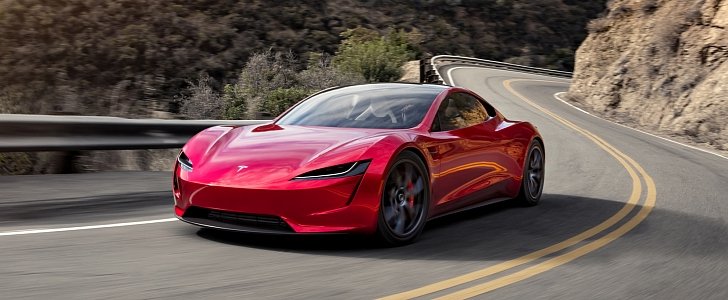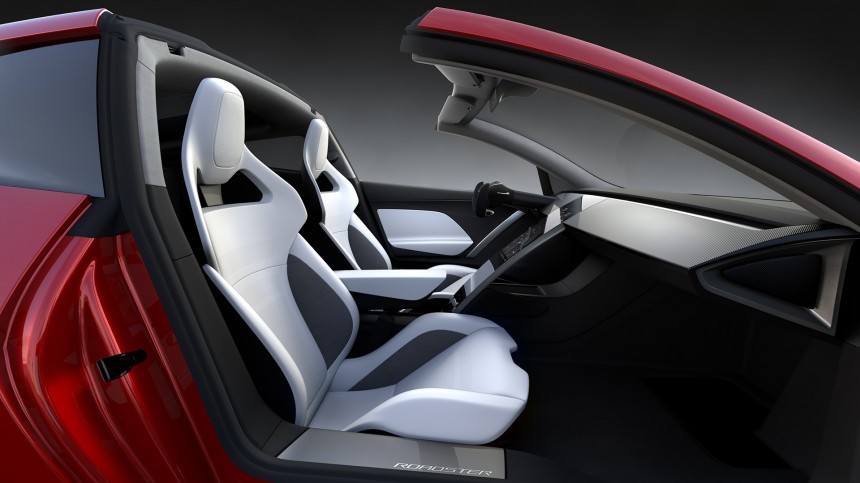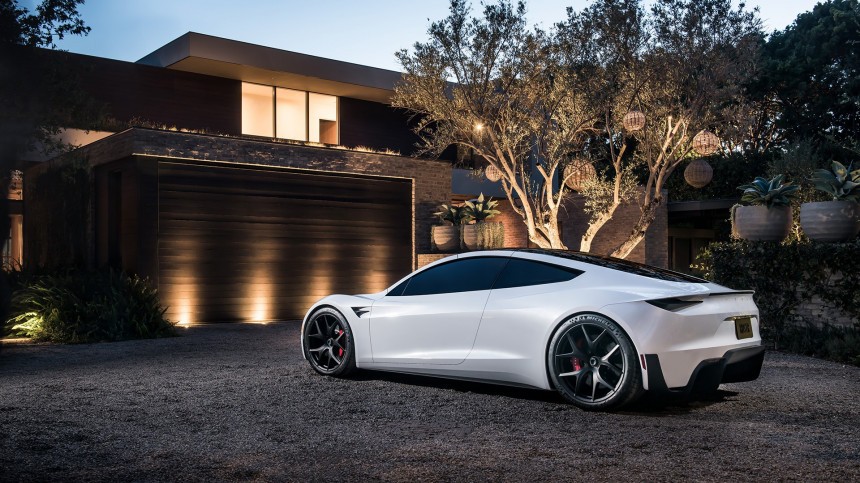People gasped when the second generation Tesla Roadster was revealed in prototype form. Some of the wow factor came from the way the vehicle looked, and the fact that it was first shown at the end of an event dedicated to the Tesla Semi.
It was mostly down to how fast it was, though, with a claimed benchmark sprint time to sixty of 2.1 seconds (that drops to 1.9 seconds for vehicles equipped with the optional cold gas thrusters - if this is so, it will be the first production car ever to do the sprint in under 2 seconds).
The sprint to 160 km/h (100 mph) will also be dispatched in an equally impressive 4.2 seconds, while its claimed 8.8-second quarter-mile time and 410 km/h (255 mph) top speed put it in a different league compared to all other electric vehicles out there. Current EV top speeds are relatively low compared to gasoline cars with similar power levels - this is because electric cars have so much torque that gearboxes can’t quite cope, so most EVs just use a direct drive with some kind of gear reduction to put their power down.
It’s not yet clear whether or not the next Tesla Roadster will have a gearbox (the plan for the first incarnation of the model was to have one, but it just wasn’t reliable and in the end it was ditched in favor of direct drive). Since then, though, advances in the field have been made and there is one production car out now that does have a (two-speed) gearbox created by transmission specialists ZF - the new Porsche Taycan electric sedan.
On top of this, the new Roadster’s battery, said to have 200 kWh capacity, would bestow the two-door Tesla with a maximum one-charge range of around 1,000 km (620 miles), more than any other EV on the market. At least that was the initial claim made back in 2017, because in April, 2019, Musk tweeted that the Roadster would, in fact, exceed the 1,000 km mark on a single charge.
All these numbers (which, by the way are subject to change and by change we mean improvement) are definitely impressive. To stir the pot even more, Tesla’s chief designer, Franz von Holzhausen shed new light on the new Roadster in a Ride the Lightning podcast. He said the vehicle has evolved since the prototype was unveiled and that these changes have improved the vehicle in every single way.
He didn’t go into specifics, but we presume he was talking about the car’s performance - acceleration and/or top speed, as well as its range. And this ties in nicely with Elon Musk’s aforementioned tweet about the range increase. We can’t even imagine how much faster the car will be, given that its current claimed sprint time is at the very limit of what modern car tires are able to handle, but we’re still eager to see how it performs.
The second-gen Tesla Roadster is set to be unveiled in production trim after the Model Y goes into production and starts reaching buyers, so no sooner than late 2020 (early 2021). It will be interesting to see if it also precedes the Tesla pickup, although that vehicle hasn’t even been shown in concept form yet, whereas the Roadster prototype/study was revealed some two years ago.
We therefore expect the Roadster to debut before the pickup and we already know its price - the base model will start at $200,000, but it won’t be available from the get-go. The first 1,000 examples will be the more expensive Founder’s Series model, with a price tag of $250,000. It won’t be a super-limited series model, though, and Tesla plans to manufacture 10,000 units per year.
So even though we’re theoretically around a year away from the production Tesla Roadster’s reveal, we’ve still yet to see its final production body and interior. The prototype/design study that everybody associates with this car is quite old now and, just like its performance credentials, it has undeniably evolved a bit since then, so we’re curious to see how exactly it has changed.
What we know for sure is that it will retain the same basic shape, with seating for four (well, 2+2 anyway) and a removable roof, as well as invisible exterior door handles, but aside from this there isn’t much else we can speculate upon.
The sprint to 160 km/h (100 mph) will also be dispatched in an equally impressive 4.2 seconds, while its claimed 8.8-second quarter-mile time and 410 km/h (255 mph) top speed put it in a different league compared to all other electric vehicles out there. Current EV top speeds are relatively low compared to gasoline cars with similar power levels - this is because electric cars have so much torque that gearboxes can’t quite cope, so most EVs just use a direct drive with some kind of gear reduction to put their power down.
It’s not yet clear whether or not the next Tesla Roadster will have a gearbox (the plan for the first incarnation of the model was to have one, but it just wasn’t reliable and in the end it was ditched in favor of direct drive). Since then, though, advances in the field have been made and there is one production car out now that does have a (two-speed) gearbox created by transmission specialists ZF - the new Porsche Taycan electric sedan.
All these numbers (which, by the way are subject to change and by change we mean improvement) are definitely impressive. To stir the pot even more, Tesla’s chief designer, Franz von Holzhausen shed new light on the new Roadster in a Ride the Lightning podcast. He said the vehicle has evolved since the prototype was unveiled and that these changes have improved the vehicle in every single way.
He didn’t go into specifics, but we presume he was talking about the car’s performance - acceleration and/or top speed, as well as its range. And this ties in nicely with Elon Musk’s aforementioned tweet about the range increase. We can’t even imagine how much faster the car will be, given that its current claimed sprint time is at the very limit of what modern car tires are able to handle, but we’re still eager to see how it performs.
The second-gen Tesla Roadster is set to be unveiled in production trim after the Model Y goes into production and starts reaching buyers, so no sooner than late 2020 (early 2021). It will be interesting to see if it also precedes the Tesla pickup, although that vehicle hasn’t even been shown in concept form yet, whereas the Roadster prototype/study was revealed some two years ago.
So even though we’re theoretically around a year away from the production Tesla Roadster’s reveal, we’ve still yet to see its final production body and interior. The prototype/design study that everybody associates with this car is quite old now and, just like its performance credentials, it has undeniably evolved a bit since then, so we’re curious to see how exactly it has changed.
What we know for sure is that it will retain the same basic shape, with seating for four (well, 2+2 anyway) and a removable roof, as well as invisible exterior door handles, but aside from this there isn’t much else we can speculate upon.















